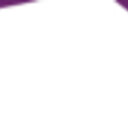Screening study on the anti-angiogenic effects of Traditional Chinese Medicine - Part I: Heat-clearing and detoxicating TCM.
Ключавыя словы
Рэферат
BACKGROUND
Few studies have explored the anti-angiogenic effects of TCM - even more so, as it applies to cancer treatment research. Heat-clearing and detoxicating TCM is the most frequently used category in the treatment of cancerous tumors, but lacks sufficient validation studies.
OBJECTIVE
The present research (in our series of studies) aims to explore the anti-angiogenic effects of TCM; so we begin with heat-clearing and detoxicating TCM.
METHODS
Six typical heat-clearing and detoxicating TCM (Philippine Violet Herb, Wild Chrysanthemum, Heartleaf Houttuynia Herb, Chinese Lobelia Herb, Spreading Hedyotis Herb and Uniflower Swisscentaury Root) were decocted, concentrated, sieved and desiccated to attain the water extract. This study utilized the vascular organism research model for Fli1a-EGFP zebrafish, which were raised and maintained under standard conditions. 22h post-fertilization (hpf) embryos were distributed into 12-well plates for a treatment period of 26h. The TCM water extracts which were diluted in 0.1% dimethyl sulfoxide (DMSO), were added to each well at a concentration of 200μg/ml. The positive control was 5μg/ml PTK787 (vatalanib) and the vehicle control was 0.1% DMSO. At 48hpf larvae were tricaine anesthetized and imaged. To demonstrate if TCM shows angiogenesis defects, ten larvae were randomly chosen to conduct a quantitative assay. Quantitative real-time PCR was conducted to dissect the mechanisms involved by analyzing the contributions of signaling pathways and molecules concerning angiogenesis, with a total of ten genes examined.
RESULTS
All 30 larvae treated with Wild Chrysanthemum, Uniflower Swisscentaury Root and PTK787 showed angiogenesis defects. Embryos treated with Wild Chrysanthemum and Uniflower Swisscentaury Root showed a lower number of complete intersegmental vessels (ISVs) and there was statistically significant differences between TCM and the vehicle control. Wild Chrysanthemum and Uniflower Swisscentaury Root have a higher inhibition rate and the statistical difference between TCM and the vehicle control was significant. Compared with vehicle controls, Wild Chrysanthemum could significantly modulate the relative mRNA expression of all ten genes. Whereas, Uniflower Swisscentaury Root could significantly regulate the relative mRNA expression of seven genes, it did not show a significant impact on the remaining three genes.
CONCLUSIONS
The present research demonstrates that Wild Chrysanthemum and Uniflower Swisscentaury Root have anti-angiogenic effects in zebrafish and that they could regulate both proangiogenic mechanisms and negative angiogenesis regulators. Their anti-angiogenic effects result from effects on negative regulators overriding their effects on proangiogenic mechanisms. The results provide new insights into their clinical application and therapeutic potential for the management of angiogenesis-dependent diseases such as cancer.


